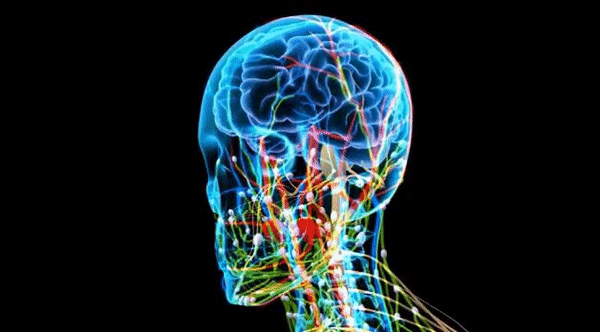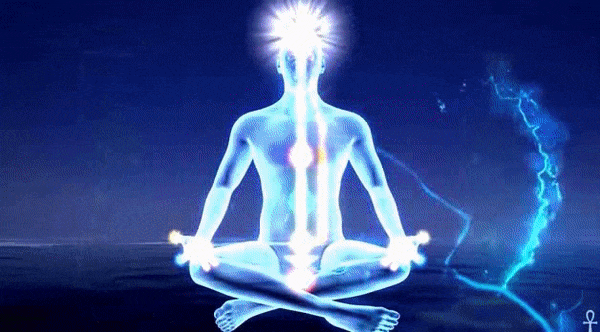Inside God: The Inside God Story.
The God Insider Blows the Whistle on You Being Inside God and God Being Inside You...or What?
(Maybe it is entirely somthing else.)
Special Bonus Round!
Extra Fantastic Thought-Contemplation Exercise included in this lesson. Scroll down to the end of this lesson to find it.
What a bother this all comes with.
There are so many points of view to consider.
Is God inside you or are you inside God?
Or what?
And then, what if there is no God?
And if there is God...what then?
Oh my.
What to do?
Perhaps you are doing both at the same time.
Doing what?
Being inside God and God being inside you.
Let's go deeper.
How does consciousness become conscious of being conscious?
Consciousness, one of the most profound and elusive concepts in neuroscience and psychology, is not located in a single specific area of the human brain. Instead, it arises from complex interactions between various brain regions. Here's a
brief overview:
2. Thalamus: Often considered the brain's relay station, the thalamus is thought to be crucial in the processing and transmission of sensory information to the cerebral cortex. Some theories suggest that the thalamus may play a central role in consciousness.
3. Reticular Activating System (RAS): Located in the brainstem, the RAS is essential for regulating wakefulness and sleep-wake transitions, which are fundamental aspects of consciousness.
4. Temporal Parietal Junction (TPJ): Involved in processing of self and other's perspectives and the integration of sensory information, the TPJ is thought to contribute to aspects of self-awareness and consciousness.
5. Default Mode Network (DMN): This network, which includes regions in the medial prefrontal cortex and posterior cingulate cortex, is active when the mind is at rest and not focusing on the external world. It's associated with self-referential thoughts and mind-wandering, which are elements of consciousness.
6. Global Workspace Theory: This theory proposes that consciousness results from the integration of information by various neural networks across the brain. No single area is responsible for consciousness, but rather it's the product of widespread, coordinated activity.
Watch this Video
Brain Signals - 3D Medical Animation
It's important to understand that consciousness is a complex, multifaceted phenomenon, and science has yet to fully unravel its mysteries. The brain regions mentioned above contribute to different aspects of consciousness, but how these parts come together to create the cohesive experience of being conscious is still a topic of ongoing research and debate in the scientific community.
Big News Flash!
If you put a few bullets through your head, there is a very good chance that you will no longer be conscious of consciousness.
What do you think?
Exactly.
What do you think...with?
You most likely need a working brain to think with.
Or...maybe consciousness is NOT isolated in the brain.
Is it possible that consciousness is independent of the brain?
Can we exist as sentient forms of awareness outside of the corporeal shell game we call The Human Body?
Ah, mystery of mysteries.
More questions chasing their own tails.
Is there any sign of intelligence as an actual-factual presence at work within The Manifest?
We will get into that in Part Three of this most excellent series.
(What is The Manifest? Excellent question! It is the All That Is. It is creation. The entirety of all manifest manifestations of The Cosmos. It is everything, everywhere, at all time---from the biggest bigness to the smallest smallishness.)
What is the source of this idea of The Manifest?
(Always a good idea to drill down into the source of big words that are thrown around so effortlessly.)
"The Manifest" in the context of concepts from the Vedas (ancient Hindu scriptures) and modern physics and astrophysics can be a complex and multidimensional topic, as it involves bridging ancient philosophical ideas with contemporary scientific understanding.
The Vedas and The Manifest
In the Vedas, "The Manifest" often refers to the observable universe, encompassing all that is physically perceivable. This includes the material world and its various forms and phenomena. The concept is deeply intertwined with Vedic cosmology and spirituality, where the physical world is seen as a manifestation of a higher, more fundamental reality.
Modern Physics and Astrophysics
In modern physics and astrophysics, "The Manifest" could be interpreted as the observable universe, including all matter, energy, planets, stars, galaxies, and other celestial bodies, as well as the laws of physics governing them. This interpretation is grounded in empirical observation and scientific inquiry.
Intersection of the Two Perspectives
1. Reality and Perception: Both the Vedas and modern science explore the nature of reality and our perception of it. The Vedas often emphasize a distinction between the ultimate reality (Brahman) and the manifest world, whereas physics investigates the nature of the physical world, seeking a unified understanding of fundamental forces and constituents of the universe.
2. Cosmology: Both touch upon the origin, structure, and dynamics of the universe. Vedic cosmology presents a more metaphysical and philosophical view, whereas modern cosmology is based on observational data and theoretical models like the Big Bang theory and the theory of general relativity.
3. Consciousness and the Universe: Some interpretations of the Vedas consider consciousness as a fundamental aspect of the universe, while in modern science, consciousness is typically studied as a product of physical processes in the brain. However, some physicists and philosophers have speculated about consciousness playing a role in the fundamental nature of reality, though this remains a fringe area of scientific inquiry.
4. Interconnectedness: The Vedas often emphasize the interconnectedness and unity of all things in the manifest world, an idea that finds some resonance in modern physics through concepts like quantum entanglement, where particles remain connected even when separated by large distances.
It is important to note that while there are intriguing parallels and intersections between Vedic philosophy and modern science, they arise from very different methodologies and epistemologies. The Vedas approach understanding through spiritual and philosophical contemplation, while modern science relies on empirical evidence and rational inquiry.
So what the heck are The Vedas and who cares?
Good point.
Some people blabber a lot about The Vedas being oh-so important.
For example:
The Vedas are a large body of religious texts originating in ancient India and form a significant part of Hindu tradition.
Composed in Vedic Sanskrit, they are among the oldest sacred texts of Hinduism. There are four main "Vedas," each serving a different purpose and containing various types of texts like hymns, rituals, and philosophical discourses. Here are the four main branches:
1. Rigveda (ऋग्वेद):
- The Rigveda is the oldest of the Vedas and primarily consists of hymns and praises. It's divided into ten books (mandalas) and contains 1,028 hymns (suktas) dedicated to various deities. The hymns are poetic and philosophical and are meant for recitation.
2. Samaveda (सामवेद):
- The Samaveda is derived primarily from the Rigveda, focusing more on the musical chant aspect of the hymns. It's used mainly for liturgical purposes. The Samaveda text is shorter than the Rigveda but is considered important for its emphasis on the musical aspect of the hymns, which play a vital role in Vedic rituals.
3. Yajurveda (यजुर्वेद):
- The Yajurveda is centered around the performance of rituals. It contains a collection of sacrificial prayers (yajus) and is more prose-oriented. The text is a guide for priests performing the Vedic sacrifices. There are two main versions of the Yajurveda: the "Black" (Krishna) Yajurveda and the "White" (Shukla) Yajurveda, differing in their arrangement and interpretation of the hymns.
4. Atharvaveda (अथर्ववेद):
- The Atharvaveda is different from the other three Vedas. It includes a collection of spells, charms, and magical incantations, alongside hymns, philosophy, and rituals. This Veda is more concerned with practical aspects of life, including health, marriage, death, and material prosperity.
Each Veda is further divided into four parts: the Samhitas (hymns), the Brahmanas (rituals), the Aranyakas (theologies), and the Upanishads (philosophies). These texts collectively encompass the full range of Vedic religious and philosophical teachings. The Vedas have been orally transmitted for centuries and are revered as the authoritative source of Hindu spiritual knowledge, rituals, and practices.
But what about the chakras?
Tell me about the chakras and how I can cleanse and purify my chakras. I've heard a lot about how it is important to balance my chakras.
Tell me about the chakras and how I can cleanse and purify my chakras. I've heard a lot about how it is important to balance my chakras.
Is that like getting the wheels balanced on my car?
Tell me, oh Great One!
The concept of chakras is an integral part of certain Vedic and Yogic traditions within Hinduism and Buddhism.
Chakras are conceived as focal points of energy within the human body, each corresponding to specific physical, emotional, psychological, and spiritual states.
The Seven Main Chakras and Their Sanskrit Names:
1. Muladhara (मूलाधार) - Root Chakra:
- Located at the base of the spine, Muladhara is associated with the element of earth and represents grounding, stability, and physical energy.
2. Svadhishthana (स्वाधिष्ठान) - Sacral Chakra:
- Situated in the lower abdomen, Svadhishthana is linked with the water element. It's associated with creativity, sexual energy, and emotion.
3. Manipura (मणिपूर) - Solar Plexus Chakra:
- Located in the stomach area, Manipura is related to the fire element and is the center of personal power, confidence, and self-control.
4. Anahata (अनाहत) - Heart Chakra:
- Found in the center of the chest, Anahata is connected to the air element and represents love, compassion, and emotional balance.
5. Vishuddha (विशुद्ध) - Throat Chakra:
- Located in the throat, Vishuddha is associated with the ether (space) element and governs communication, self-expression, and truth.
6. Ajna (आज्ञा) - Third Eye Chakra:
- Positioned in the forehead, between the eyebrows, Ajna is linked with intuition, insight, and mental clarity.
7. Sahasrara (सहस्रार) - Crown Chakra:
- Located at the top of the head, Sahasrara represents spiritual connection and enlightenment.
Historical Background:
The first detailed description of the chakra system as we know it today appears in the medieval era in Hindu and Buddhist texts. However, the origins can be traced back to earlier texts like the Upanishads, which date back to around 500 B.C.E. The full, systematic concept of the seven-chakra system was developed later, around the 8th to 10th centuries C.E., in texts like the Yoga Upanishads and the Yoga Kundalini Upanishad.
Chakras: Superstitious Beliefs and Modern Perspectives
In modern times, the concept of chakras has been integrated into a wide range of spiritual and therapeutic practices, often diverging from its traditional roots. Some of these interpretations and practices have been critiqued for being overly simplistic, commercialized, or detached from their cultural and historical context.
Superstitious beliefs surrounding chakras in contemporary culture often include the idea that chakras can be “opened” or “unblocked” to cure physical and psychological ailments or to bring about immediate spiritual enlightenment. These beliefs tend to lack the depth and complexity of the original teachings and can sometimes lead to misconceptions about the chakra system.
In traditional Vedic and Yogic practices, working with chakras is a part of a holistic spiritual journey that involves meditation, ethical living, and various other physical and mental disciplines. The focus is not only on individual benefit but also on achieving a greater understanding of oneself and the universe.
While there's interest in the therapeutic potential of chakra-based practices in alternative medicine, these practices have not been substantiated by scientific evidence and should be approached with a clear understanding of their origins and intended purpose.
Who Cares? So What?
I am getting there. Exercise patience, please.
You see, the larger question forming within this lesson is this one:
Is it possible for your human awareness to interact directly with the manifest creation? Can you directly influence material matter? Can you, with your mind, make things happen outside of yourself?
Put it this way: Can you do something using only your mind, your intention, your will power?
Can you do something without using your body or parts of your body, only with your mind, with your thoughts, your desire?
To answer this question is one part of this lesson.
Hang on to your belief systems.
Buckle up.
It's going to be a bumpy ride.
My one and only truly perplexing video of what might be a really true example of mind over matter.
The mystery of the man who can make animals obey his will...from a distance.
Watch This Video
When examining evidence of so-called "mind over matter" it is common to remain skeptical. Some people react with negativitity. "Bosh! Stuff and nonsense! Obviously a trick. How can anyone believe such utter scammers."
Yes, it is difficult to look into information that does not fit neatly into our preconceived beliefs about how our world works.
Thailand girl's supernatural power at the bus stop
Well? The real thing or a big fat hoax?
Prahlad Jani:
This man claimed not to eat or drink for 70 years.
 |
| >>> https://en.wikipedia.org/wiki/Prahlad_Jani <<< |
And then there is historical version of what happened to this guy --- John (a.k.a. St. John the Apostle, John the Evangelist).
 |
| >>> click here to learn where John was alleged to have been boiled in boiling oil <<< |
Yes, it is that John. He drank poison, but that didn't do him in. Then he was boiled alive in a vat of boiling oil. But that didn't do him in either.
This is the same John that supposedly wrote the last book of the New Testament.
Well, that does seem to be not normal, doesn't it? But...yes, but...the thing is that is a legend, a story, and it is impossible to know if it really did happen.
So where is some clear and verifiable evidence that any of this mind-control stuff could possibly be true?
Hmmmm.
I don't seem to be able to find you any relevant, verifiable data. Except maybe the video of the man doing qi-gong (chi kung) on the animals. (Please refer to the video somewhere above this note.)
However, I do have this offering in the form of an actual training manual that will give you an abundance of supernormal powers.
It does come with a catch, though.
But first, here is the tantalyzing click bait.
The Yoga Sutras of Patanjali, a foundational text in the philosophy and practice of yoga, describe various siddhis or spiritual powers that can be attained through dedicated yogic practice.
These siddhis are mentioned primarily in the third book (Vibhuti Pada) of the Yoga Sutras. Here is a list of these siddhis, with their Sanskrit names and English translations:
1. Anima (अणिमा): The ability to become as small as an atom, implying the power to reduce one's physical body to an extremely small size.
2. Mahima (महिमा): The ability to become incredibly large, expanding one's physical body to an enormous size.
3. Laghima (लघिमा): The power to become weightless or light in weight, enabling one to float or levitate.
The TM/Siddhi Yogic Hopping Technique
4. Garima (गरिमा): The ability to become incredibly heavy, increasing one's physical density and weight.
5. Prapti (प्राप्ति): The ability to obtain anything desired, extending one's reach to any location or object.
6. Prakamya (प्राकाम्य): The power to fulfill desires, often interpreted as irresistible will or having one's wishes fulfilled.
7. Ishitva (ईशित्व): The ability to dominate or control natural forces, also interpreted as lordship or supremacy over nature.
8. Vashitva (वशित्व): The power of subjugation or control over beings, implying influence or control over others.
9. Kamavasayitva (कामावसायित्व): Mastery of desire, or the ability not to be disturbed or affected by desires.
10. Kama Rupin (कामरूपिन्): The ability to assume any form desired, changing one's physical appearance at will.
11. Parakaya Pravesha (परकाय प्रवेश): The ability to enter the bodies of others, also known as body transference.
12. Svachanda Mrityu (स्वच्छन्द मृत्यु): The ability to die at will, implying control over the time of one's own death.
13. Srishti (सृष्टि): The power of creation, often interpreted as the ability to create or manifest.
14. Samhara (संहार): The power of dissolution or destruction.
15. Jnanavarnanam (ज्ञानावर्णनम्): The ability to block or obstruct the knowledge of others.
16. Akalpa (अकल्प): The power to be free from the limitations of karma.
17. Vak Siddhi (वाक् सिद्धि): The ability to have one's words become reality.
18. Trikala Jnanam (त्रिकाल ज्ञानम्): Knowledge of the past, present, and future, often referred to as the power of prophecy.
19. Advandvam (अद्वंद्वम्): Beyond duality, experiencing no opposition or conflict.
These siddhis are considered extraordinary spiritual achievements and are said to arise from intense meditation and other yogic practices.
It might be a bit of fun to be able to "do" these supernormal powers, wouldn't it?
How about this one, number eight:
8. Vashitva (वशित्व): The power of subjugation or control over beings, implying influence or control over others.
However, Patanjali cautions that these powers can be obstacles to achieving the ultimate goal of yoga, which is spiritual liberation (Moksha or Samadhi). The focus in yoga is often on transcending these powers in pursuit of higher spiritual realization.
As mentioned above --- Oh, special aside, in the training manual, the author does advise against the pursuit of these powers as a distraction from the main goal.
And also clearly states to not accept the invitation of the angels when they call to you to come and frolick with them. The author warns that you will probably get side-tracked in the angelic realms for a very long time.
This will keep you from the goal.
(What is the goal? More about that later.)
You may have noticed that one of the goals mentioned is something called "samadhi", which is when you experience the state of pure mental awareness of awareness --- the classic "witness state" of consciousness.
More details about samadhi:
What is it?
The absence of thought while witnessing the absence of thought, stretching into being aware of being aware without any mental disruption, and the complete absorption of your consciousness into the state of timeless eternity, and awareness of infinite realization of self and Self: The Self being aware of the Self, without the presence of any niggling thoughts or other distractions from this perfect, steady realization of...what?
And now the price you have to pay to be able to actually "do" any of the supernormal powers. Hold on to your asethetics.
In the Yoga Sutras of Patanjali, the Yamas are the first limb of the eightfold path of yoga, representing ethical guidelines or moral imperatives.
There are five Yamas, each describing a principle to be observed to improve one's interaction with the external world and aid in spiritual development. Here they are, with their Sanskrit names and English translations.
1. Ahimsa (अहिंसा): Non-violence or non-harming. This principle goes beyond physical non-violence and extends to thoughts and words, advocating for compassion and understanding towards all living beings.
2. Satya (सत्य): Truthfulness or honesty. This Yama emphasizes the importance of speaking the truth, but in a way that is not harmful (in alignment with Ahimsa).
3. Asteya (अस्तेय): Non-stealing or abstaining from taking what is not freely given. This includes not taking physical objects, as well as non-material things like time, ideas, or credit for others' work. It also means not having the sense of coveting another's achievements or possessions.
4. Brahmacharya (ब्रह्मचर्य): Traditionally interpreted as celibacy, but in a broader modern context, it is often understood as the right use of energy or the practice of moderation, particularly in relation to sexual activity. It emphasizes the channeling of energy towards spiritual pursuits rather than purely physical relationships.
5. Aparigraha (अपरिग्रह): Non-possessiveness, non-greed, or non-attachment. This Yama teaches letting go of attachment to possessions and material things, and encourages contentment with what one has.
These Yamas are foundational to the practice of yoga as they set the ethical groundwork. They are not just rules but guidelines for living a meaningful and purposeful life. Patanjali presents these Yamas as universal truths, applicable to everyone, regardless of one's stage in life, belief system, or spiritual aspiration.
Yikes!
But wait. Is there more that you have to do?
Is there?
Yes!
In the Yoga Sutras of Patanjali, the Niyamas are the second limb of the eightfold path of yoga.
These are personal observances or practices that relate to one's inner world, aiding in spiritual development and self-discipline. There are five Niyamas, each representing a specific practice or principle to cultivate. Here are the Niyamas along with their Sanskrit names and English translations:
1. Saucha (शौच): Purity or cleanliness. This Niyama emphasizes both external cleanliness (of the body, environment) and internal cleanliness (mind and heart). It is about maintaining a clean body and environment, as well as cultivating pure thoughts and emotions.
2. Santosha (संतोष): Contentment or satisfaction. Santosha is about finding contentment and happiness in the present moment and in what one has, rather than being caught up in desires for what one does not have.
3. Tapas (तपस्): Discipline or austerity. Tapas refers to the practice of self-discipline, willpower, and perseverance. It's about cultivating a sense of purpose and dedication towards one’s practice and life goals. Also known as being "one-pointed".
4. Svadhyaya (स्वाध्याय): Self-study or study of spiritual scriptures. This involves introspection and the study of sacred texts to better understand oneself and the nature of the universe. It also includes the practice of self-inquiry and contemplation.
5. Ishvara Pranidhana (ईश्वर प्रणिधान): Surrender to a higher power or devotion to the Divine. This Niyama is about letting go of the ego and surrendering the fruits of one's actions to a higher power, fostering a sense of trust and devotion.
The practice of these Niyamas helps individuals to cultivate inner strength, clarity, and peace, which are essential for deeper spiritual practice and growth in the path of yoga. They are guidelines for living a disciplined and harmonious life, both with oneself and in relation to the broader universe.
Isn't that super-great-fantastic?
I hope you have read with some intensity and focus the provisions you must make to attain the ability to make yourself as small as an atom.
And that would be the first supernormal power (sidhi, siddhi), this one:
1. Anima (अणिमा): The ability to become as small as an atom, implying the power to reduce one's physical body to an extremely small size.
It certainly does "imply" that you would have to power to make your actual-factual body quite small: "As small as an atom".
That is small, isn't it?
 |
| Image of two people performing Anima (अणिमा) |
You want to know the specific technique necessary to perform any one of these supernormal powers?
It is relatively simple.
Yes, you do have to make sure that you have all the yamas and niyamas ticking away, tickety-boo. But, hey! That's a cinch, isn't it? After all, you've most certainly mastered Yama Number One:
1. Ahimsa (अहिंसा): Non-violence or non-harming. This principle goes beyond physical non-violence and extends to thoughts and words, advocating for compassion and understanding towards all living beings.
Spoiler Alert!
So, if you have ANY negative feelings or thoughts towards any and all living beings (yes, the entire collection of all creatures great and small, throughout the ENTIRE universe) you are buggering up your ahimsa अहिंसा.
This means your performance of supernormal powers will be tainted. You probably won't be able to make yourself as small as an atom.
Darn!
Foiled again!
Okay, now the real f'd up part of all this stuff. And that is, exactly how you "make" the supernormal powers happen.
Pay attention, now.
"Samyama" is a profound concept in the Yoga Sutras of Patanjali, representing a higher stage of concentration and insight in the path of yoga.
It is found in the third chapter (Vibhuti Pada) of the Yoga Sutras. Samyama is essentially a combination of three advanced spiritual practices: Dharana (concentration), Dhyana (meditation), and Samadhi (absorption or superconscious state). When these three practices are applied together to a single object or point of focus, it is called Samyama.
Components of Samyama:
1. Dharana (धारणा):
- Sanskrit Reference: Patanjali Yoga Sutra 3.1 - "देशबन्धश्चित्तस्य धारणा।"
- English Translation: "Dharana is the binding of the mind to one place, object or idea."
- Explanation: Dharana is the practice of concentration where the mind is held or fixed on a single point or object. This could be a physical object, a concept, a sound (like a mantra), or even an internal body part.
2. Dhyana (ध्यान):
- Sanskrit Reference: Patanjali Yoga Sutra 3.2 - "तत्र प्रत्ययैकतानता ध्यानम्।"
- English Translation: "Dhyana is the continuous flow of cognition toward that object."
- Explanation: Dhyana is the state of meditation where the consciousness or awareness is directed in a continuous flow towards the object of focus, without interruption. It is a more profound and absorbed state of concentration.
3. Samadhi (समाधि):
- Sanskrit Reference: Patanjali Yoga Sutra 3.3 - "तदेवार्थमात्रनिर्भासं स्वरूपशून्यमिव समाधि।"
- English Translation: "Samadhi is when the object of meditation engulfs the meditator, appearing as if the subject and object are one."
- Explanation: Samadhi is a state of deep absorption where the distinction between the meditator and the object of meditation dissolves. It is a state of oneness, superconsciousness, or complete absorption.
Samyama (संयम):
- Sanskrit Reference: Patanjali Yoga Sutra 3.4 - "त्रयमेकत्र संयमः।"
- English Translation: "The three together — Dharana, Dhyana, and Samadhi — constitute Samyama."
- Explanation: Samyama is the simultaneous practice and culmination of Dharana, Dhyana, and Samadhi on a single object.
It is a state where the practitioner achieves an intense concentration and insight into the nature of the object of meditation. Through Samyama, a yogi can gain deep knowledge and understanding, as well as various spiritual powers (siddhis).
In the Yoga Sutras, Patanjali explains that through the practice of Samyama on various subjects or aspects of existence, a yogi can attain extraordinary insights and powers.
However, these are considered byproducts of the practice and not its primary goal.
The ultimate aim of Samyama, and indeed all yogic practice, is to reach a state of liberation (Kaivalya) and to understand the true nature of reality and one's self.
Wouldn't that be a bit of fun?
Are you wondering where the thought-contemplation exercise I promised you is at?
Don't worry.
It is lurking a little bit further on.
Oh, here it is.
Once you start in on this series of in-depth training videos, you can find all the different FREE videos in the entire series.
If you have any questions, please feel free to ask me.
Yours Truly,
Robert Farmilo
The God Consciousness Project







%20from%20the%20Yoga%20Sutras,%20featuring%20diverse%20individuals%20of%20different%20ages%20and%20ethnicities,%20peacefully%20coe%20800%20A.png)


No comments:
Post a Comment